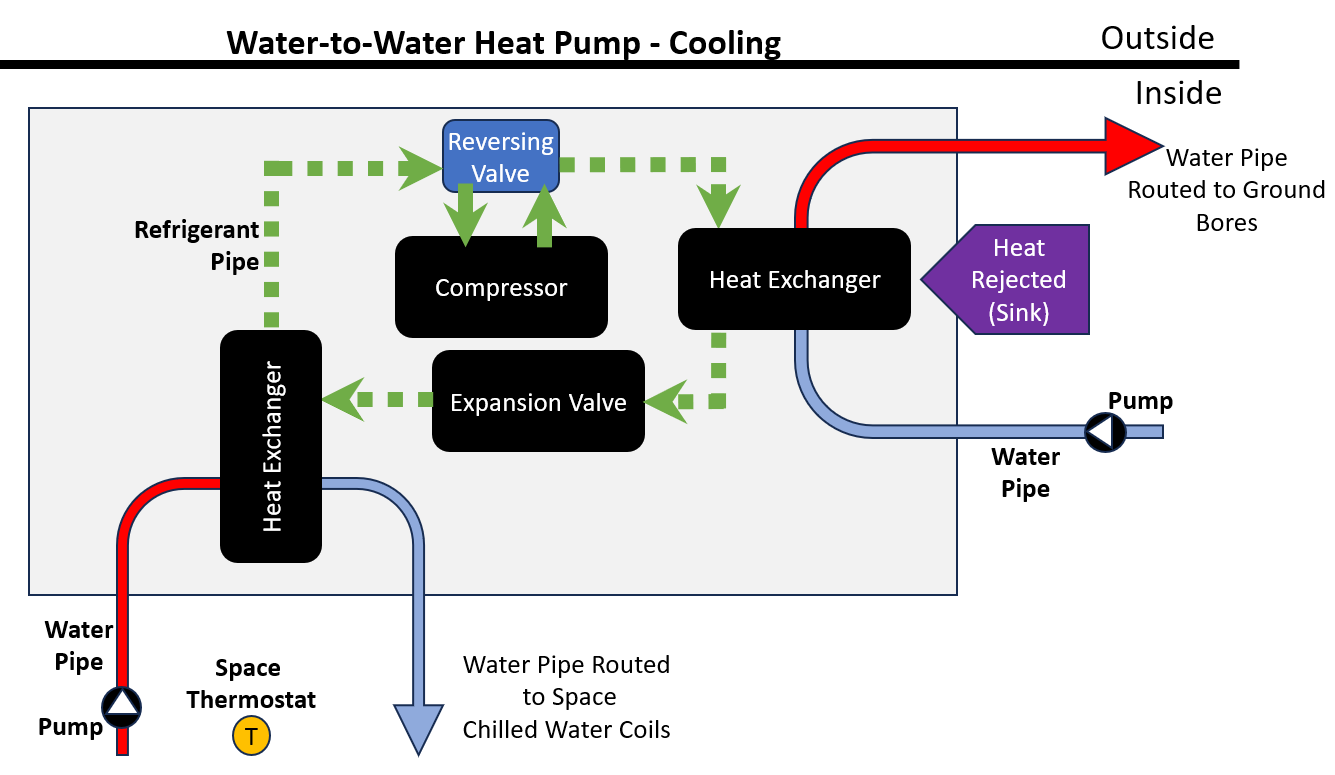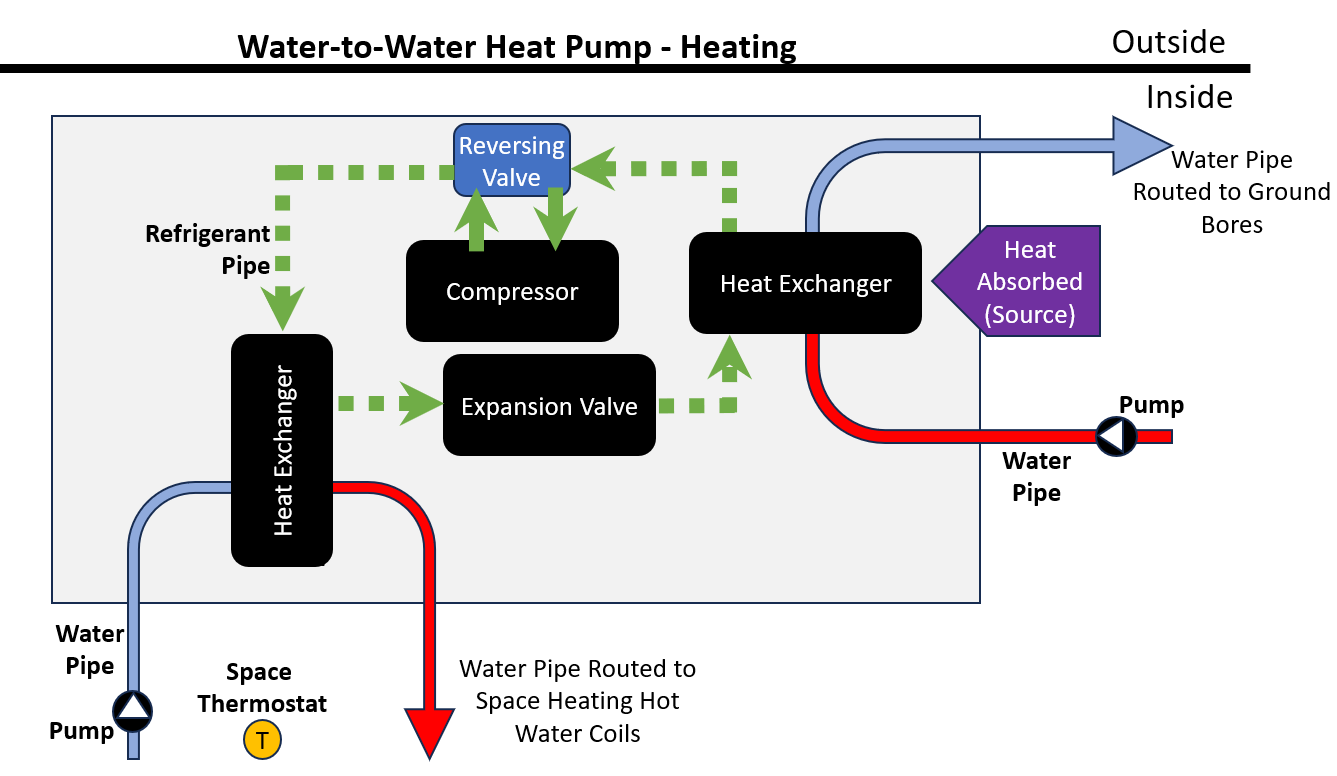The water-to-water heat pumps use the earth as a heat exchanger to cool and heat water.
Water-to-water heat pumps can take the place of a boiler and chiller in some applications (chilled beams, radiant floors, etc.) that operate at moderate water temperatures (between 45°F and 130°F). This unit uses a ground bore as the heat source/sink but instead of the refrigerant coil being positioned in an airstream, the heating or cooling process is applied to a water loop that produces hot water or chilled water. This chilled and hot water is routed to equipment coils throughout the building via water piping and pumps.
There are typically multiple water-to-water heat pumps used in a single application. This allows the units to transition between heating and cooling based on system demand. During peak cooling season all the heat pumps may operate in cooling, whereas during peak heating season multiple units may transition to heating. During periods of lower load requirements, some of the heat pumps can be turned off completely. This system is favorable in that it reduces the required mechanical space in a building compared to a chiller and a boiler. It also inherently provides a level of redundancy when multiple units are used.
Water-to-water heat pumps’ efficiency is also optimized when multiple units are connected by the water piping routed to ground bores. In situations where there is a demand for both heating hot water and chilled water at the same time the bore loop piping may be self-balancing because the heat is transferred between the units reducing the pumping power required to distribute water to the bore field.


